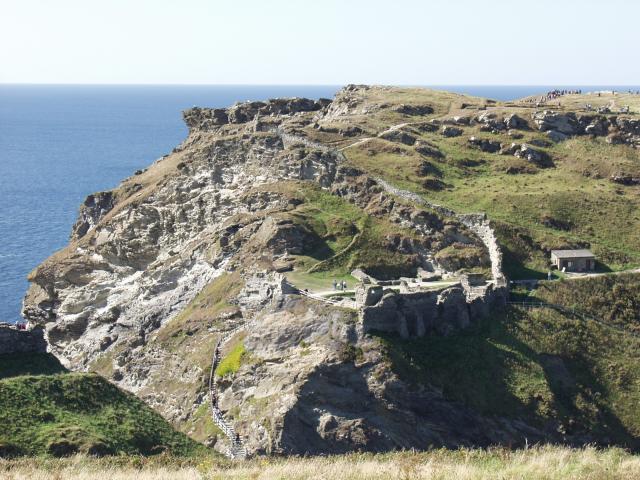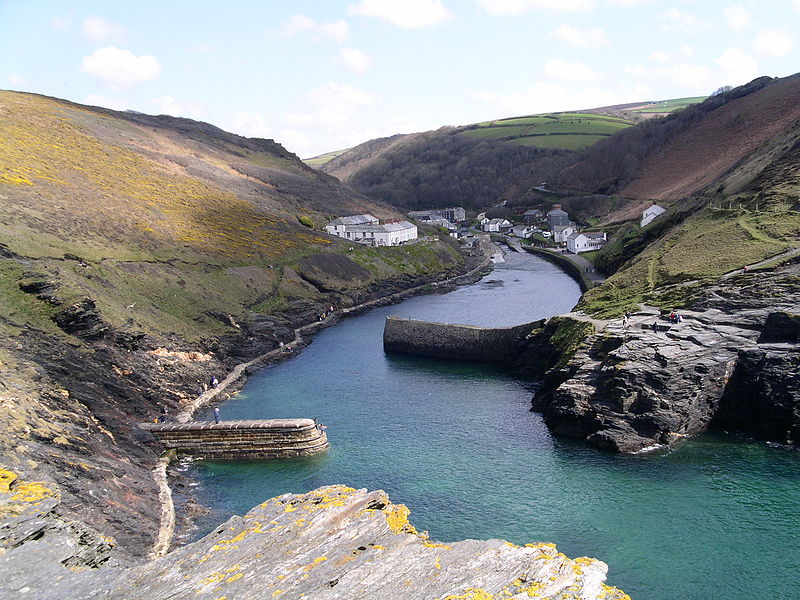This working fishing village became familiar to TV viewers
as the home of Doc Martin in the ITV series of the same name. The village was named Portwenn in the series,
and the irascible doctor’s surgery was housed in one of the many large cottages
gracing the slopes above the village. There
are walking tours available for fans of the series. Meanwhile, on the big screen, several films have included scenes shot in
Port Isaac, including Saving Grace and Oscar and Lucinda. The village is also home to the well-known male
singing group Fisherman’s Friends, who sing sea shanties. Fish enthusiasts can buy the catch fresh from
next to the slipway, or there are fishing trips available for mackerel, cod and
other fish. The pier of the harbour
where the fish are landed was built during the reign of Henry VIII, and once
served as a handling port for cargoes such as coal, limestone and salt. The narrow alleys weaving through the
picturesque village centre include one appropriately named Squeeze-ee-belly
Alley. The village is flanked by another small community called Port Gaverne, and Port Quin, which also featured in Doc Martin, is a short distance to the west. Not surprisingly, this
picturesque spot is popular with second home owners, a fact which has caused
many local people, particularly the elderly, to lament the fact that this has
changed the character of the village beyond recognition.
Map of the area.
Map of the area.
 | |
| Port Isaac - geograph.org.uk - 105004. Photo by Tony Atkin, via Wikimedia Commons. |


